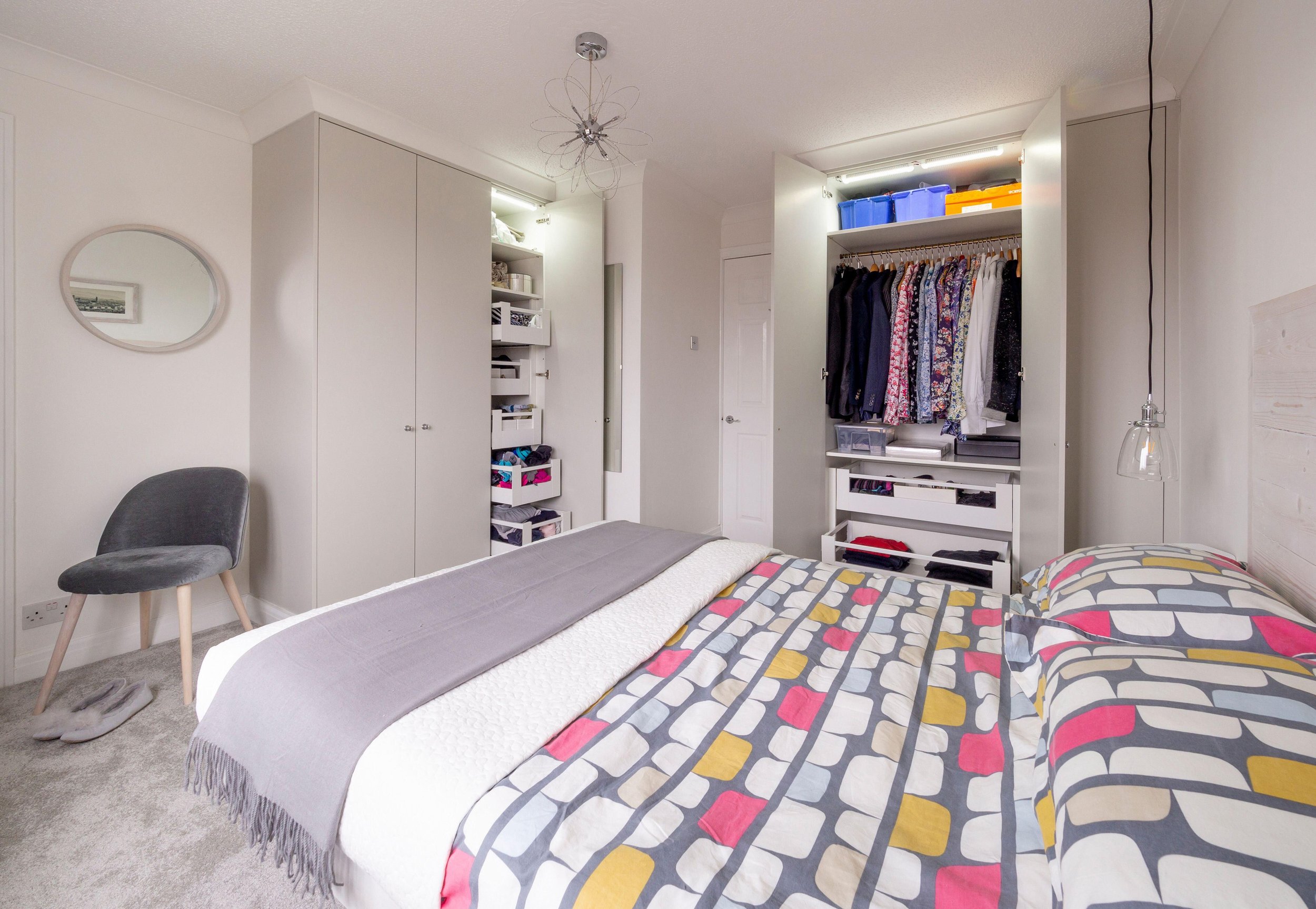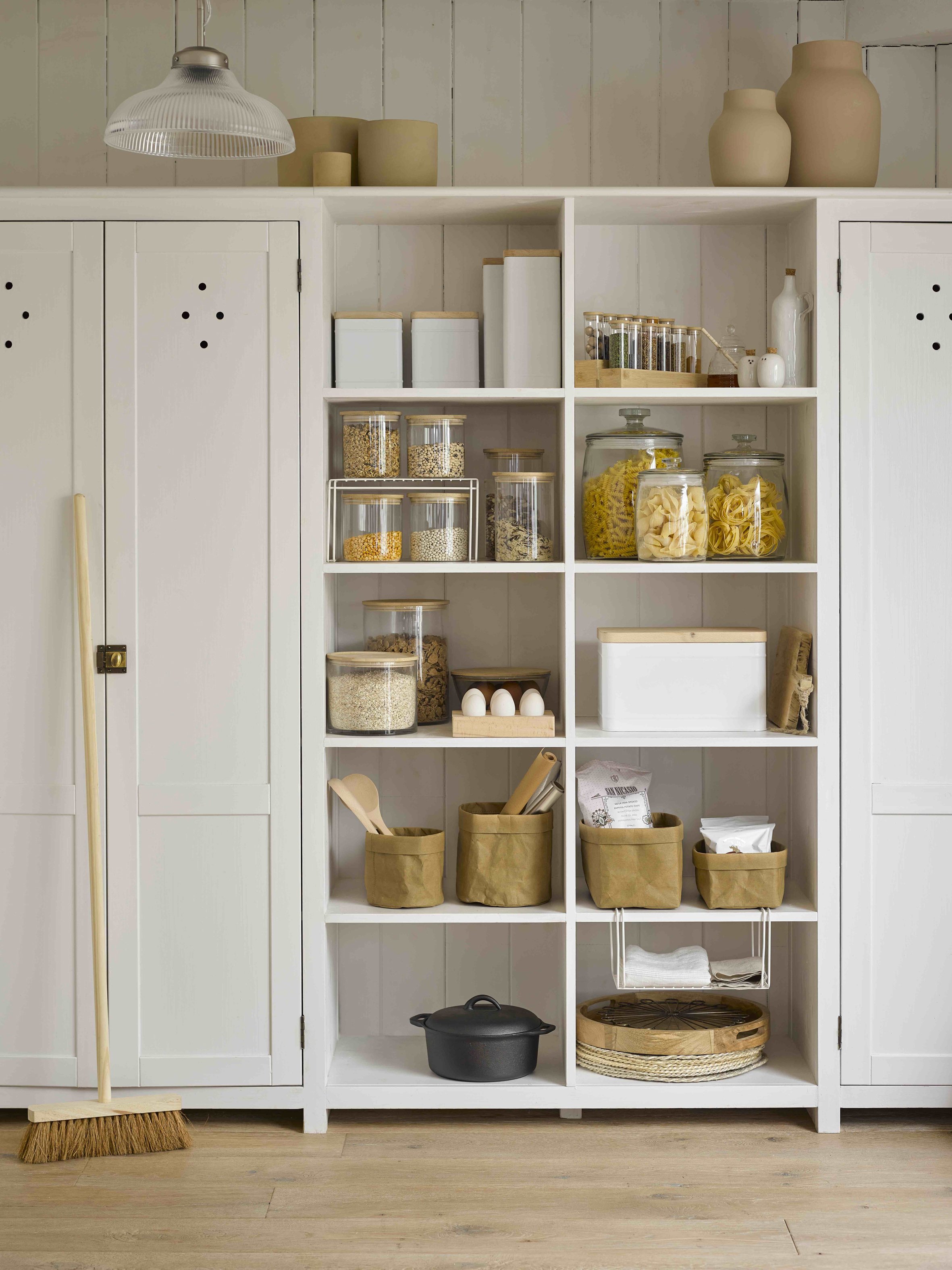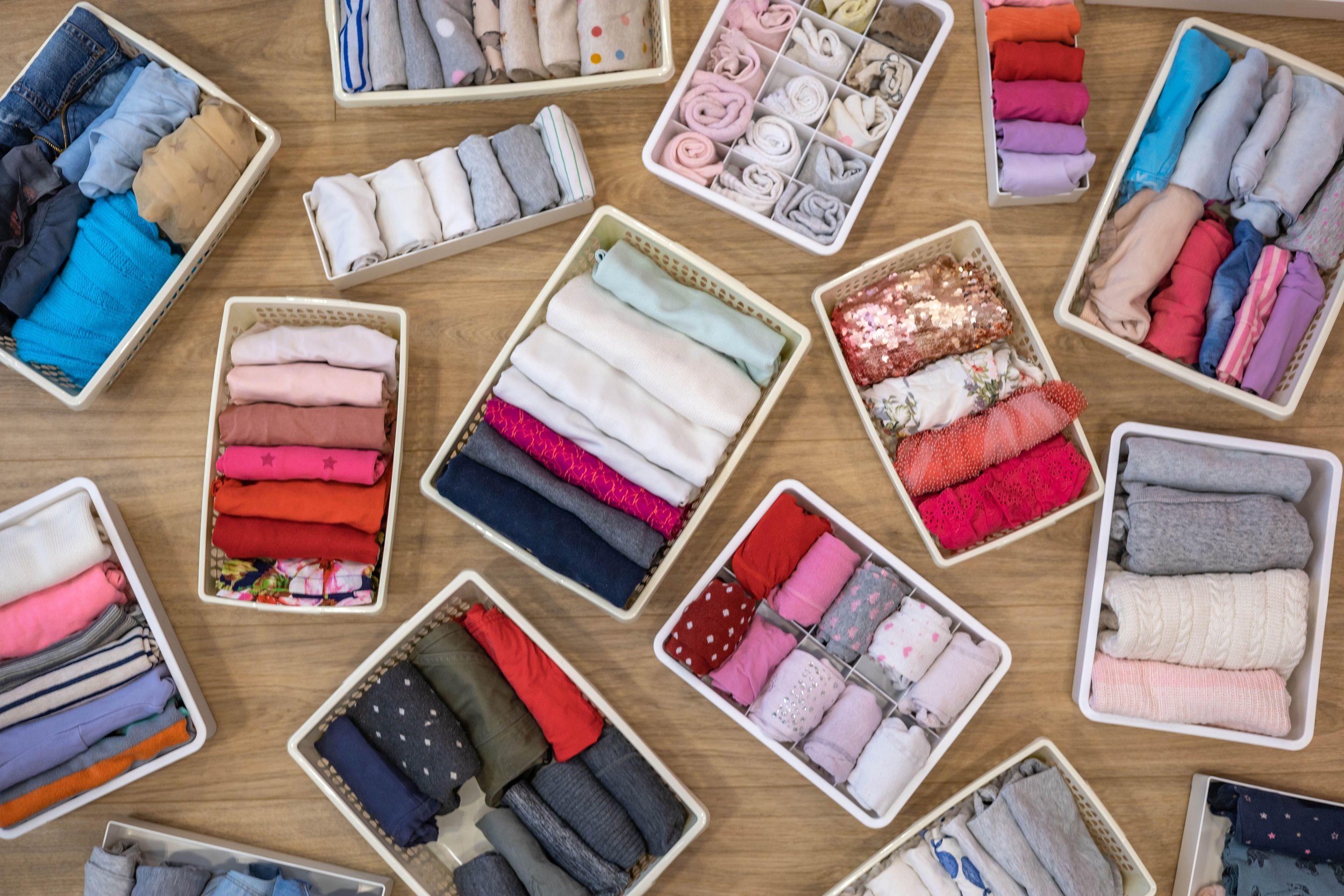Order, Order
Organising expert Lucy Mansey shares her home editing prowess for getting organised.
Self-confessed organiser and mum of three, Lucy Mansey says she’s always been fascinated by how organisation can impact your life.
A teacher for many years, she says it wasn’t until she moved to Sydney and worked in interiors and design that she realised home organising was a thing. “That’s when I fell in love with it,” she recalls.
“And more recently, with hit shows like The Home Edit, which base everything around home organisation – they do the Kardashians and all sorts of celebs – I actually realised you can make it into a profession,” she explains.
Today, she is cited by Davina McCall as ‘the Marie Kondo of Britain’, another tidying expert with a home makeover series.
Mansey’s roll call of celeb clients includes Laura Whitmore, Jamie Laing and Millie Mackintosh: “She [Mackintosh] was moving house, so I helped her edit before moving and then organised her wardrobe, kitchen and other areas of the house, to enable her to settle in quickly.”
She continues: “It’s a great way to ease the stress of moving, especially with young children, by having everything set up and ready to go.”
Mansey has also organised the homes of Tamzin Outhwaite (“I organised her fabulous wardrobe”) and Angela Scanlon, to name but a few. “I organised her wardrobe initially, and then went on to do her kitchen and playroom. She’s a busy working mum, like many of my clients, so it’s nice to be able to alleviate some stress in people’s lives. Keeping on top of the house is a job in itself!”
Mansey says it’s about maintaining a system that works for each individual client, but there are some golden rules she follows…
“The main things I’m looking for are how we can best make use of the space? It’s often the case when you go into a kitchen or closet, you shove stuff into cupboards and hope for the best.” Which, she adds, doesn’t necessarily translate into a sustainable system. “So, my first thought is, how are we going to utilise absolutely every single space in this area?”
Secondly, she asks the client how they can reduce the clutter. “We go through certain items and look at re-housing it, donating it, giving certain items you no longer want or need to a loved one.”
Mansey goes on to say part of the process is always taking absolutely everything out of the space she’s doing, going through every single piece and rearranging it so the system makes sense, and is intuitive for the person who’s living there and using it.
“It’s encouraging them to think, ‘Are you using it?’ ‘Do you love it?’ ‘Does it serve a purpose?’ And teasing that out of them to make up their own mind.”
Home Office
As Mansey points out, with so many of us working from home, our working and home environments have merged to become “a jack of all trades”.
Working from home can clutter up space, impacting our mood, creativity and productivity.
She recommends utilising your vertical space with a peg board for paperwork, cleverly built-in shelves around a doorframe, and having a caddy which neatly holds things and can be tucked away at the end of the day – products which are multifunctional and space-saving.
Lucy Mansey
Having everything in a really clear system is key, she advises. “Drawer files, so everything’s stored away nice and neatly – and then when you want to be creative, it’s all at your fingertips,” she suggests. “It’s about cutting out that frustration prior to becoming productive.”
Kitchen
Mansey says the kitchen is something she always gets asked about.
She believes you need to have a way of maintaining your cupboards. “So every few months, you’re checking sell-by dates, getting everything out and having a really good edit of what you are and aren’t using.”
She says the thing she often finds when she goes to clients’ houses is they buy food, and then in the back of the cupboard, they have duplicates. “In order to stop that from happening, to reduce food waste and save money, make sure you can see the food that you buy,” stresses Mansey.
“Don’t overstuff cupboards. Don’t have products on top of products, because that’s when it all starts to go downhill – and you can’t keep on top of what you have and haven’t bought.”
She says it’s about going back to the idea of buying only what you need.
“I’m not talking about bulk. If you bulk buy, that’s absolutely fine. For example, I might bulk buy dishwasher tabs. I have a container where I keep it topped up, and that’s what I’m using there and then. And then I have the excess in a cupboard in my utility. What I’m talking about is what you have in your kitchen, what you’re using daily and keeping that streamlined – and working in a way that works for you and the family.”
Her top tip in the kitchen is to store all like items together. So, all pastas, rice and carbs together. Or treats – crisps, for example – categorise those together and then contain them.
“I then use containers, either clear containers – definitely something I would recommend, just from the point of view of being able to see the food – or some people prefer wooden options,” notes Mansey. “You can get lovely wooden boxes on the market now.
“And I do bang on about it,” she laughs. “But it really is out of sight, out of mind. And if you can’t see something, you’re not using it in the same way.”
Wardrobe
When it comes to our wardrobes, Mansey admits it’s tricky: “I think you have to be ruthless, because it can become overwhelming, very, very quickly, especially if you like to shop.
“First of all, try and create a seasonal wardrobe, if you have the space to store clothes. Box-up, vacuum pack or store clothes you’re not wearing at that point in time – and do a changeover.”
She says this also helps to streamline and furthers the enjoyment of your clothes. “You don’t wear it all year long, but when you get something out again, un-boxing, it’s a bit more exciting – so creating a winter/summer system.”
Secondly, she says to become a ‘bouncer’ – and adopt a one-in, one-out policy.
“Or two-in, one-out, to really think about what you wear. [Ask yourself] ‘What do I love?’ ‘What do I feel good in?'”
And you can always do a ‘maybe’ pile. “Put it somewhere for a couple of months, and if you don’t feel like you’re going to miss it or regret it, that’s when you get rid.”
She recommends using containers to put items in, if you have lots of shelving in your wardrobe, and not a lot of hanging space.
“Don’t have clothes out on shelves – contain them. Have baskets of loungewear, or jeans, for example, because often what happens is the shelves just get inundated with clothes – and by containing, you’re actually limiting the ability to do that.”









